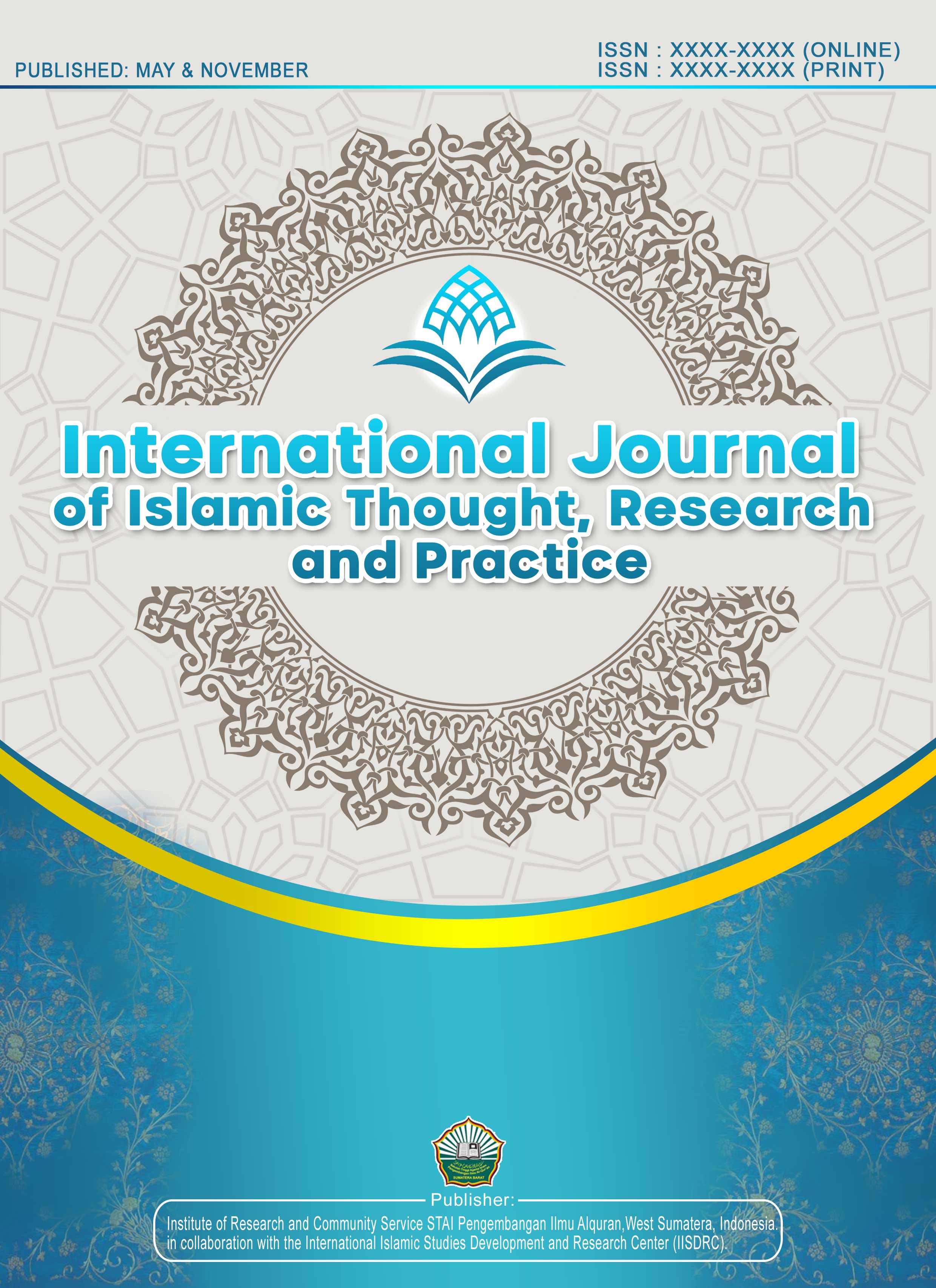Matar In The Qur’an From Perspectives Of Ibn Habib Al-Mawardi In Al-Nukat Wal Uyun Al-Tafsir Al-Mawardi
Keywords:
Matar, Al-Mawardi, Al-Nukat Wa'al 'UyunAbstract
This research is motivated by the concept of rain (matar) in the Qur’an as interpreted by Imam al-Mawardi in Tafs?r al-Nukat wa al-‘Uy?n. This library research uses the Qur’an and tafsir as primary sources, supported by hadith and al-Nukat wa al-‘Uy?n as secondary sources. It applies a thematic exegesis method (tafs?r maw??‘?) within an authorial study framework.There are about 15 times matar word mentioned in the Qur’an, its mention is found in 9 of verses and surah. From 15 times matar used mentioned, there are 6 different words of matar. Based on research, matar is rain that falls as punishment for sinners and as a lesson for believers. Some interpretations by Al-Mawardi also explain the causes and possible material that Allah sends down to earth. Stated by Ibn Abbas, the materials of the “matar” or “rained down on them clustered stones” is Persian language assimilated into Arabic, namely “sinn” (stone) and “kil” (clay). Ibn Ishaq mentioned that materials of the “matar” that it is clay cooked until it becomes like ashes. Abu Ubaidah and Ibn Muqbil expressed material of the “matar” is hard and verry strong stones. Ibn Zaid said that it comes from “sijjil” (stone baked in fire), which is the name of a certain sky. That “sijil” come from “sijjil” which mean the book or fate engraved on stones that Allah SWT has written to punish or decree something, as mentioned in the Qur’an. It record of the wicked is in sijjin (place of punishment).
Downloads
Published
How to Cite
Issue
Section
License
Copyright (c) 2025 Dian Anjani Sudarsono, Cansa Namira Sitanggang, Nurul Azizah, Adela Rahma Fitri

This work is licensed under a Creative Commons Attribution-ShareAlike 4.0 International License.






